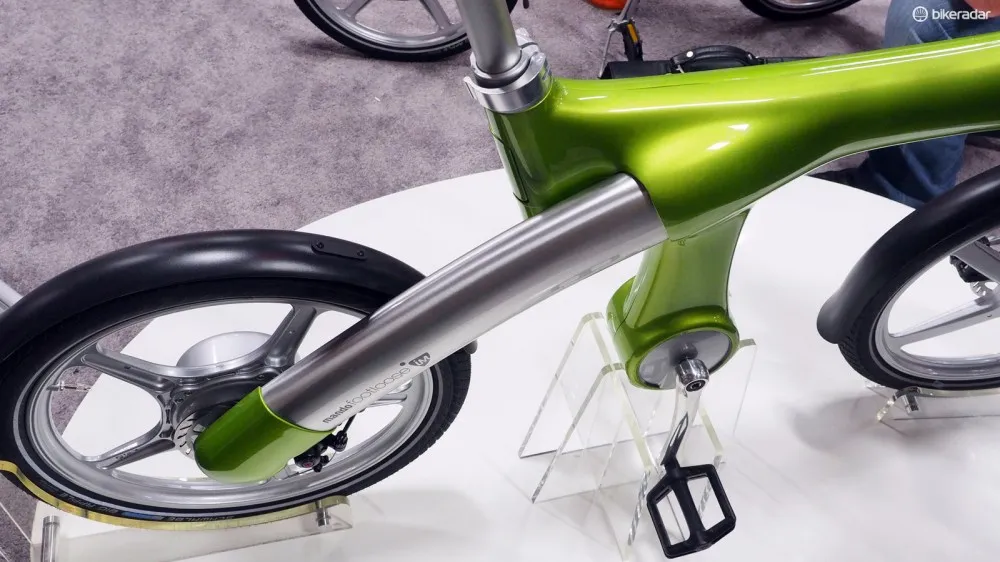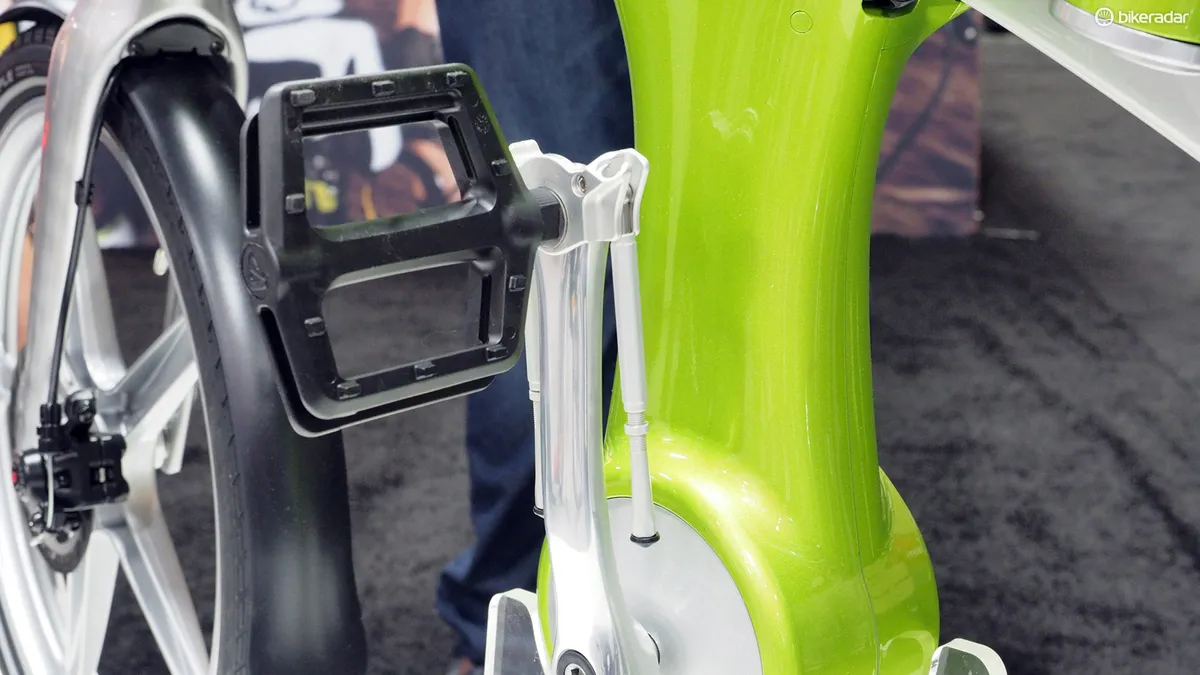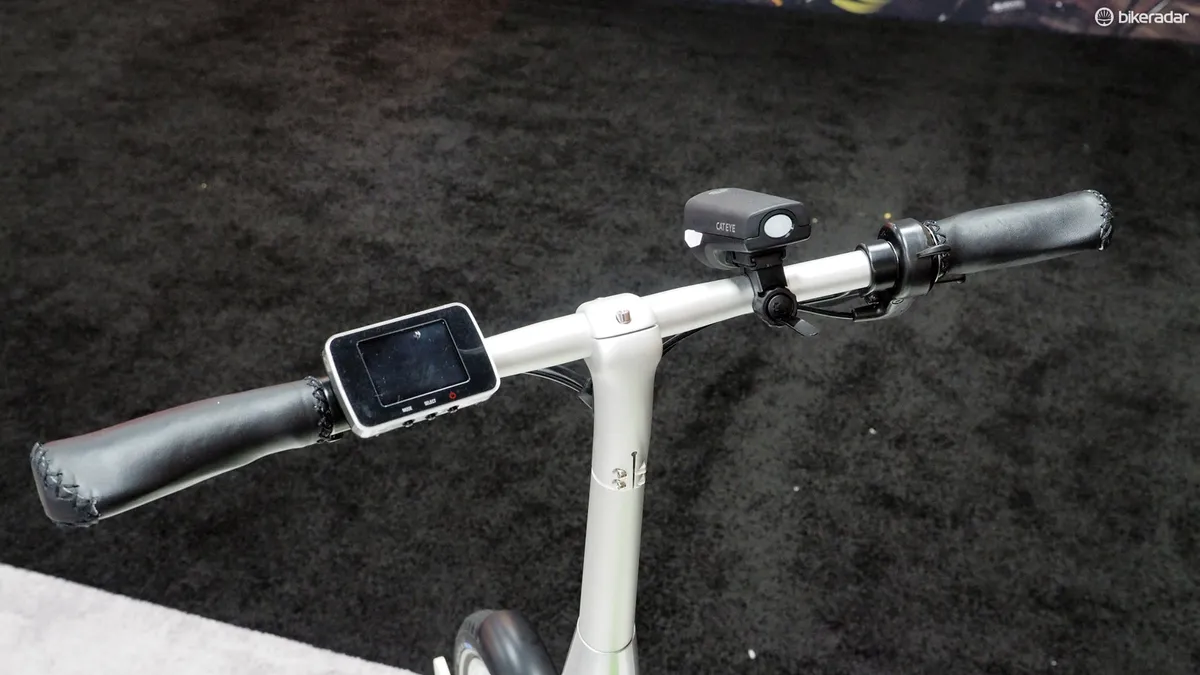Hailing from South Korea was one of the most innovative e-bikes we've seen yet. Not only is the new Mando Footloose IM packed with clever technical features, it's quite a pretty visual design, too.
Perhaps the most shocking aspect of the Mando Footloose IM is its unique chainless drivetrain. In fact, there is no mechanical connection between the cranks and rear wheel at all. Instead, the cranks are connected to an alternator, which continually recharges the battery that powers the 250-watt motor at the rear wheel. In this way, the Footloose IM's 'Series Hybrid System' operates like any conventional motor-assisted bicycle – albeit with artificially generated resistance to simulate the feel of physically propelling the bike forward.

Unlike most e-bikes, the Mando Footloose IM has no physical drivetrain connecting the cranks and rear wheel
However, this also means that the Footloose IM can simply be propelled with the thumb-operated trigger throttle. Mando claims the 8,200mAh rechargeable (and removable) lithium-ion battery pack will deliver up to a 60km (37-mile) maximum range while pedalling but still an impressive 30km (18-mile) range while only using the throttle – not bad for a bike that weighs a rather substantial 21.5kg (47.3lb).
Aside from its novel propulsion system, the Footloose IM incorporates some brilliant design work, such as the colourful plastic-covered aluminium frame, which houses all of the electronic components inside for a sleek external appearance. Moreover, the rear wheel is supported by a single, massive swingarm that gracefully swoops down from the main frame while the crank-operated alternator dangles down from a chunky stalk. Up front, the smoothly sculpted aluminium fork and tall, tapered stem complete the neatly cohesive aesthetic.

Mando equips the Footloose IM with cast aluminium wheels
According to Mando, its background in automotive manufacturing also allowed the use of cast aluminium front and rear wheels (which are stiff and heavy but will never need to be trued). Disc brakes are used at both ends, too, and there are bright LED flashers built into the back of the seatpost.
That clever design even extends to the LCD computer head. Not only is it used to control and display the propulsion system's various functions (such as remaining battery charge, calories burned, and elapsed distance) but it also acts as a sort of key to provide some measure of security. If removed from the bars, there's no way to turn the system on, and since there's no physical drivetrain, the bike simply can't be ridden otherwise.

The computer display doubles as a sort of key - if removed, the bike just can't be ridden
Retail price is rather spendy at US$3,000, but boy, is this thing cool – which, for an e-bike, is saying a lot.













